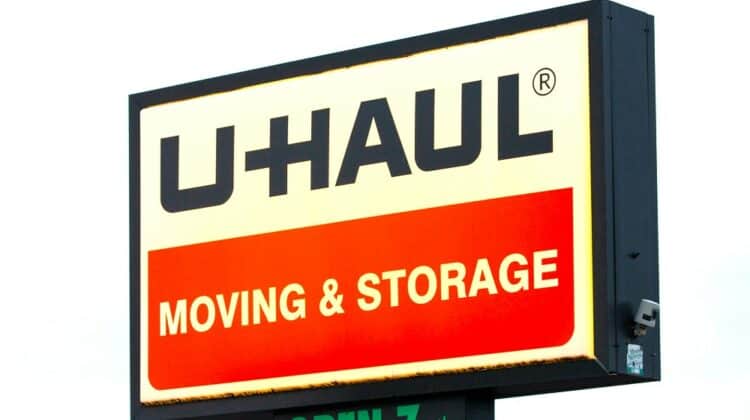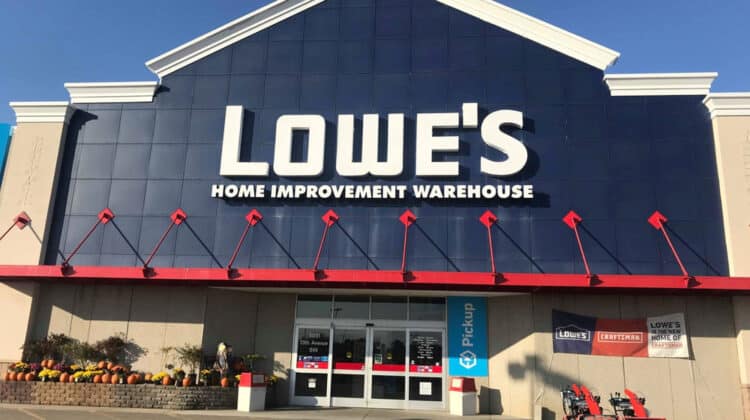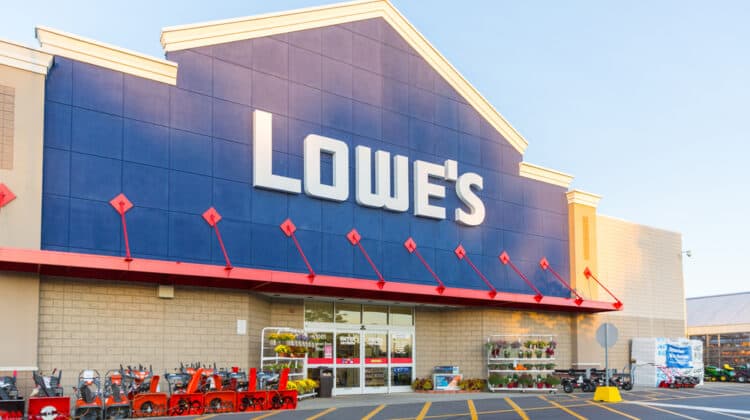
Every home has plumbing underneath it that carries wastewater out to the city’s main water filtration system.
If you have a house with a concrete slab foundation, you may wonder how deep the plumbing is underneath the slab, especially if you need to access it to eliminate a clog or the plumbing needs to be replaced due to a slab leak.
We will answer your questions so that you can determine how to move forward.
How Deep Are Plumbing Pipes Under A Slab House?

You will find your sewer lines 12 to 24 inches below the concrete slab in a slab house.
All homes require a foundation to help support the weight of the house.
A slab house uses a concrete slab as its foundation.
One main plumbing line guides waste to the sewer line underneath your home.
The sewer line is extremely hard to access since it is underneath the concrete and deep in the ground.
Residential Plumbing Systems

The job of your residential plumbing system consists of bringing fresh water into your home and removing wastewater.
Residential plumbing systems rely on gravity and pressure to complete both tasks.
You receive water into your home from your city’s main water supply or a well on your property.
Water pressure ensures that the water can make its way upstairs or around corners.
If you get water from the city, a meter will measure how much water you receive into your home.
You will find a shut-off valve by the water meter in the case of a plumbing emergency.
Cold water goes directly to the desired fixtures.
If you request hot water, it goes through the water heater first.
You can choose between a standard tank water heater or a tankless water heater.
You can also choose between an electric water heater or a gas water heater (using either natural gas or propane, depending on your preference and what is available in your area).
Your drainage system slopes downward from the top of your home to the sewer line underground.
Pipes connect your sinks and tubs to a vertical main line that runs through your home.
Once underground, gravity takes the waste from the drain line to the sewer line.
To prevent items from getting stuck, you will find traps at most of the different fixtures throughout your home.
Variables That Determine Plumbing Depth

Numerous variables are involved when determining how deep the plumbing of a particular home will get.
1. Building Code
Every area has local building codes regarding plumbing depth.
You should learn the codes in your area, especially if you are installing new plumbing, to ensure you don’t end up stuck with expensive repairs.
2. Frost Line
Colder climates have a frost line, which is the depth at which groundwater freezes.
Pipes need to be below the frost line to ensure that the water in the pipes doesn’t freeze and cause the pipes to freeze and potentially burst.
The colder the climate, the deeper the frost line will be and the deeper you will need to install your pipes.
3. Existing Setup
The current infrastructure of the land will help determine how deep your pipes will go.
As long as the current setup is in accordance with all local codes, most people stick with that to eliminate unnecessary expenses.
Different Types Of Foundations

A slab house is a house that uses a concrete slab foundation as opposed to a crawl space foundation or basement foundation.
We will cover the main types of house foundations.
1. Slab Foundation
A slab foundation is one of the strongest and cheapest foundation options.
The concrete holds up to most trauma, supports a lot of weight, and it won’t succumb to termites, either.
Slab foundations work best in locations that don’t freeze since the freezing can lead to cracks.
Pipes are underneath the concrete, making them difficult to access.
You also can’t use the space as you can with many other foundation types.
2. Crawl Space
A crawl space is the second most expensive type of foundation.
It is usually made of wood, which isn’t as strong as concrete and doesn’t get larger than four feet tall.
They are typically very difficult to walk through, and they are susceptible to termites.
It’s also not heated.
However, you will have access to all plumbing, and they don’t cost too much.
3. Basement
A basement is one of the most expensive types of foundation since you can use it as a living space if you get it completely finished (meaning you add flooring, walls, plumbing, and electrical).
However, you need to be especially careful of excess moisture that can cause mold and mildew.
With the right plan, though, you can turn your basement into support for your home as well as a game room with a laundry room.
What Is A Slab Leak?

A slab leak refers to a leak from the plumbing underneath your home’s slab.
This type of leak creates a lot of damage if left unattended, especially if it damages the foundation.
Signs Of A Slab Leak
Here are some signs that may indicate a slab leak:
- Uneven floor
- Cracks in concrete
- Mold
- Low water pressure
- Wet spots in the lawn
- Increase in water usage
How To Detect A Slab Leak
If you suspect a slab leak, you need to find out for sure before the problem gets worse.
You can check for a leak using your water meter.
Turn the water off and watch the meter to learn if the meter stays in one place or if it moves.
If it drops after the water has been off for a couple of hours, you have a leak.
You can also use certain endoscopes to look for a leak, but not all endoscopes can show you a small pinhole leak.
Cost Of Sewer Line Repair
The average cost of slab repair is $2,280.
The leak detection alone costs $280.
The rest of the bill is determined by the work that needs to be completed.
Here are the average costs for some of the common work that must get done:
- Broken pipe repair: $150 to $350
- Water line leak repair: $330 to $1,360
- Slab repair: $1,900 to $6,710
As you can see, if you let the problem get so bad that it requires extensive repair to the slab, you will have to pay the most.
To avoid the high repair bills associated with fixing your home’s foundation, look for a problem and solve it early.
You cannot make these repairs yourself.
Unfortunately, the work involved requires specialized training and tools.
You will not be able to save money by doing the job yourself.
Causes Of An Underground Slab Leak

You may experience a slab leak for several reasons.
Understanding what causes these leaks can help you avoid them.
1. Corrosion
Corrosion refers to the natural process of metal turning to rust over time when it comes into contact with water regularly.
Metal corrodes faster when in contact with hot and high-pressure water.
The corrosion not only deteriorates the metal material, creating a leak, but it can also get rust in your drinking water.
Copper and cast-iron pipes have the highest likelihood of corrosion.
High-grade 304 stainless steel with an 18-gauge thickness avoids corrosion the most.
2. Old Plastic Pipes
Plastic pipes don’t succumb to corrosion, but they don’t last nearly as long as metal pipes, either.
When you install plumbing deep beneath your home, you want to use durable, long-lasting materials.
Otherwise, the pipes will start to deteriorate and cause a leak.
3. Ground Shifts
If the ground shifts, it can create serious damage to the plumbing underneath your slab foundation.
The weight of the slab foundation can cause damage if an earthquake causes the ground to move and land on the plumbing.
Slab Leak Prevention

There are some proactive measures you can take to prevent a slab leak from happening before it does.
1. Proper Installation
It’s important to have your plumbing installed properly from the very beginning.
If you are in charge of new installation, use high-end materials and enlist the assistance of reputable plumbers with experience in plumbing underneath slab foundations.
2. Avoid Chemical Drain Cleaners
Chemical drain cleaners can be extremely useful when you have a stubborn clog, especially if it’s deep in your drain.
However, the chemicals can eat away at your pipes and create conditions ideal for corrosion.
Instead of using chemical drain cleaners, you can use an enzymatic drain cleaner or an electric auger.
Of course, a drain snake can only reach so deep into your plumbing system.
3. Set Water Heater Properly
Experts recommend that you don’t set your water heater higher than 120 degrees to avoid scalding.
However, this temperature also keeps your water from getting so hot that it creates damage to your plumbing.
You should also manage the water pressure.
You don’t want the water heater pressure to be more than 80 psi.
You can install a pressure reducing valve to lower the pressure.
Of course, you don’t want it to get lower than 50 psi.
4. Install A Water Softener
A water softener will remove minerals from the water that enters your home so that the minerals don’t create sediment buildup in your plumbing.
Ideally, you want the water softener installed at the main water supply.
However, you can also install a water softener on different fixtures throughout your home.
Sewer Line Clog

With your sewer line so difficult to access, it’s important to prevent a clog from developing before the fact.
If you do experience a clog, it can create unsanitary and inconvenient conditions.
Causes Of A Sewer Line Clog
If you know what causes sewer line clogs, you can prevent them before they start.
One of the biggest causes of a sewer line clog is an accumulation of grease and fat in the pipes.
Grease and fat stick to the inside of your pipes, creating stubborn buildup over time.
Paper products, such as paper towels and baby wipes, cause some of the most intense clogs.
Food waste also creates deep clogs.
Finally, hair can create a clog in your system as well.
Usually, hair clogs develop at the beginning of your drain system.
However, they can occur deeper in your plumbing as well.
Preventing A Sewer Line Clog
To eliminate grease buildups, you should dispose of cooking grease and oil in the garbage instead of pouring it down the drain.
You should also use a strainer in your sinks and your showers to catch large items before they fall down the drain.
Finally, you should avoid putting the following items down your garbage disposal:
- Bones
- Coffee grounds
- Corn husks
- Eggshells
- Nuts
- Oatmeal
- Onion peels
- Paint
- Potato peels
- Trash
Resolving A Sewer Line Clog
One of the best ways to resolve a sewer line clog is to use a drain cleaner.
The two main types of drain cleaners are chemical drain cleaners and enzymatic drain cleaners.
Chemical drain cleaners use acid or caustic chemicals to eat at the clog quickly.
However, the harsh chemicals can eventually take a toll on your pipes and cause corrosion and other deterioration, creating a leak.
Alternatively, you can use an enzymatic drain cleaner that won’t damage your plumbing, but it also won’t resolve the issue as effectively.
Enzymatic drain cleaners require more time to work, so you can’t use them if you need an immediate resolution.
They also only eat away at natural material.
They won’t work for clogs that have developed as a result of synthetic materials, which can include baby wipes and other paper products.
Conclusion
Every home has drain pipes that lead to the city’s sewer lines.
Since plumbing uses gravity to help move things properly, you will find the plumbing underneath your concrete slab foundation.
Since it’s extremely difficult to get through concrete to access the pipes, you will want to do everything you can to prevent the problem from escalating before it leads to expensive repairs that take place underneath the concrete.
NEXT: How To Remove Crown Molding (Step-By-Step)























I like it, it motivates student learning.